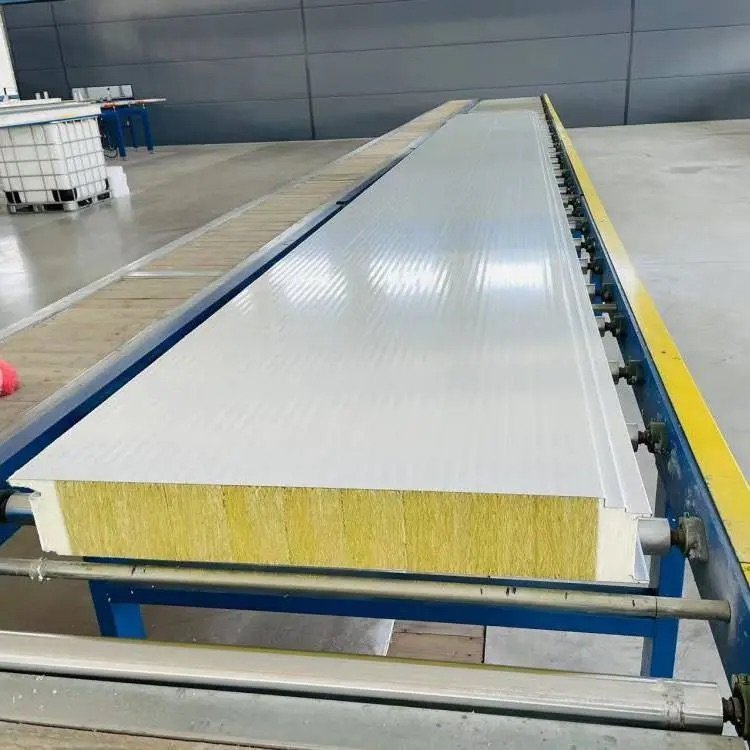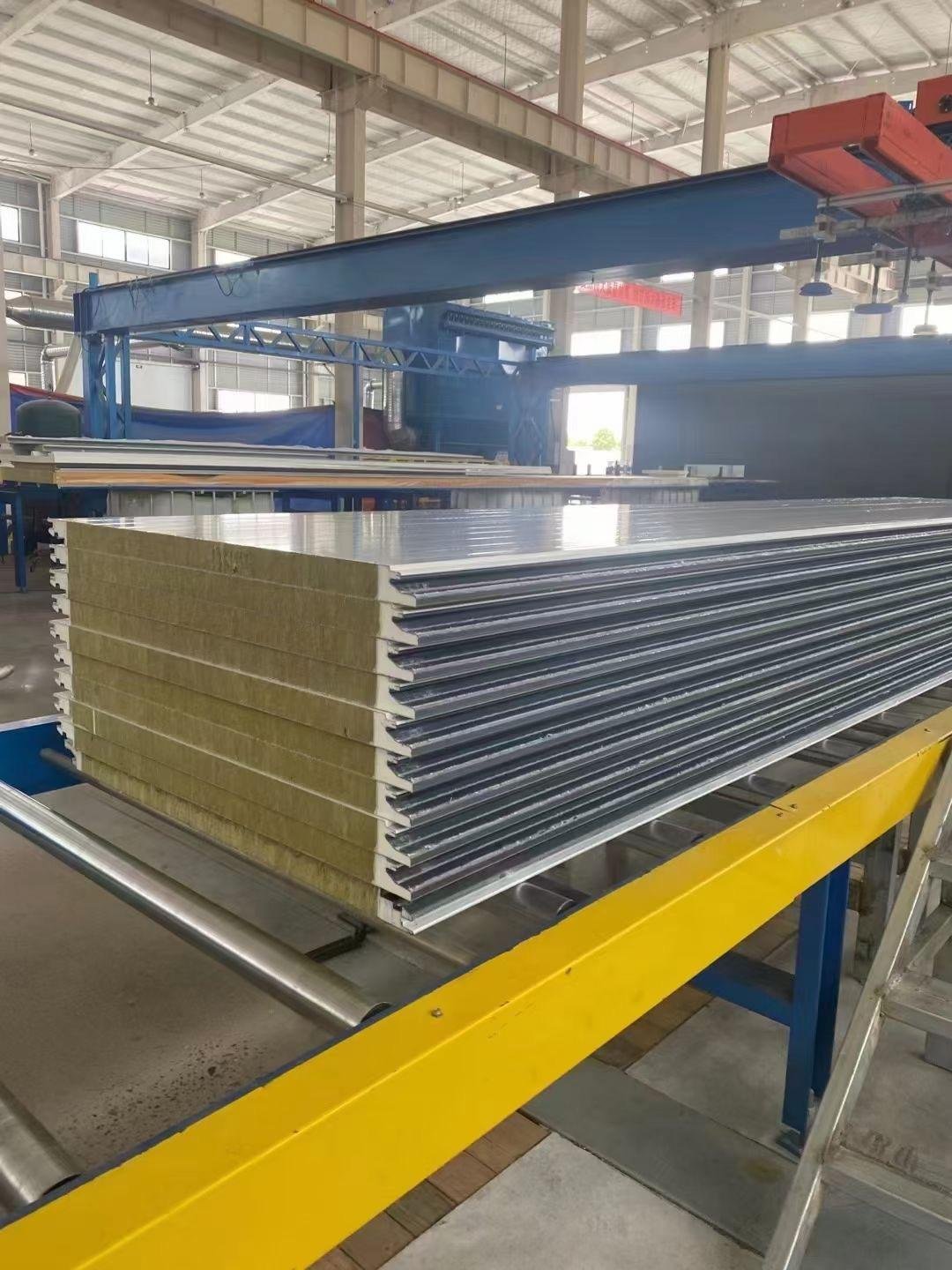
Evaluating thermal insulation is crucial for understanding how well insulation works. It aids in energy savings and selecting the appropriate materials. Sandwich panels are tested to evaluate thermal insulation and determine their effectiveness in blocking heat. This assessment helps in deciding their suitability for specific applications. Metrics such as K-value, U-value, and R-value explain how heat moves through these materials. Each of these values provides different insights into heat flow and insulation performance. Proper testing to evaluate thermal insulation leads to improved insulation quality and reduced energy bills. Additionally, it contributes to stronger and more efficient buildings. Focusing on these aspects benefits the environment and saves money.
Key Takeaways
Knowing K-value, U-value, and R-value is important for checking insulation. These numbers show how well materials stop or allow heat to pass.
Picking materials with low K-values and high R-values saves energy. These materials keep homes warm in winter and cool in summer.
Using tools like heat meters and sensors helps measure insulation correctly. Good testing helps choose better materials for buildings.
Following building rules and standards keeps homes safe and efficient. Meeting insulation rules makes buildings greener and saves energy.
Spending money on good insulation is worth it over time. It lowers energy bills and helps HVAC systems last longer.
Key Metrics to Evaluate Thermal Insulation

Understanding the K-value
What is the K-value?
The K-value shows how well a material conducts heat. It tells us how easily heat moves through it. A smaller K-value means the material blocks heat better. This makes it a good insulator. Sandwich panels with low K-values stop heat transfer effectively. For example, builders use low K-value materials to save energy.
Why is a low K-value important?
A low K-value means better insulation. It helps keep homes cool in summer and warm in winter. Studies prove low K-value materials reduce heat passing through walls. This makes them perfect for energy-saving buildings.
Exploring the U-value
What does the U-value mean?
The U-value measures how much heat passes through a material. It checks heat flow per square meter for each degree of temperature change. A smaller U-value means better insulation. This helps us know how well a building keeps heat inside or outside.
How does U-value help save energy?
A low U-value saves energy by stopping heat loss in winter. It also blocks heat gain in summer. For example, walls with low U-values need less heating or cooling. Changing U-values for local weather can save even more energy.
Importance of the R-value
What is the R-value?
The R-value shows how much a material resists heat flow. It is found by dividing the material’s thickness by its heat conductivity. A bigger R-value means better resistance to heat. This makes it important for checking insulation quality.
Why is a high R-value better?
A high R-value means less heat moves through walls, roofs, or floors. Buildings with good R-values can lower heating and cooling costs by 40%. This makes R-values important for designing energy-efficient and comfy spaces.
How to Evaluate Thermal Insulation Performance

Tools and Equipment for Measurement
Tools needed for K-value, U-value, and R-value
To check insulation, you need tools for key measurements. For K-value, use thermal conductivity meters to test heat flow. U-value testing needs heat flux sensors and temperature probes. These tools measure heat moving through a panel. For R-value, calculators or software analyze thickness and heat resistance. Each tool helps ensure accurate insulation results.
Devices for better accuracy
For accurate results, use advanced tools like guarded hot plates. These are great for testing K-value and heat conductivity. Infrared cameras help find heat leaks during U-value checks. Digital thermal resistance meters make R-value testing easier. These devices improve insulation testing accuracy.
Measuring the K-value
Getting the panel ready for testing
Clean the sandwich panel to remove dirt or dust. Make sure it is dry and has no moisture. Place it in a stable environment with steady temperature and humidity. Follow ASTM rules to prepare the panel properly for testing.
Testing and understanding K-value results
Use a thermal conductivity meter to find the K-value. Place the device on the panel and record heat transfer rates. A lower K-value means better insulation. Experts suggest using panels with low K-values for better heat resistance. Compare your results to industry standards to check performance.
Measuring the U-value
Setting up for U-value testing
Attach heat flux sensors to the sandwich panel. Put temperature probes on both sides to check temperature changes. Secure the panel to avoid gaps or cracks. Include real-world factors, like joints, for accurate testing.
Checking U-value results for insulation
Find the U-value by dividing heat flux by temperature difference. A smaller U-value means better insulation performance. Gaps or cracks can raise the U-value and reduce effectiveness. Use the ASHRAE Handbook to compare your results with standard values. This helps you judge the panel’s insulation quality.
Measuring the R-value
Finding R-value using material properties
The R-value shows how well a material stops heat flow. A bigger R-value means better insulation. To find it, divide the temperature difference by the heat flux. This uses Fourier’s Law of Heat Conduction. Thicker materials have higher R-values. Materials with high thermal conductivity have lower R-values.
Follow these steps to calculate the R-value:
Measure the panel’s thickness in meters.
Check the temperature difference across the panel.
Measure the heat flux through the material.
Divide the temperature difference by the heat flux.
For example, if a panel is 0.1 meters thick, has a 10°C temperature difference, and a heat flux of 50 W/m², the R-value is 0.2 m²·K/W. This helps compare insulation materials and check their performance.
Using R-value to check insulation quality
The R-value is key to understanding insulation performance. A higher R-value means better heat resistance, keeping spaces comfy. Use the R-value to see if a panel fits your needs. High R-value panels are great for cold areas to stop heat loss. In hot places, they block heat, cutting cooling costs.
When testing insulation, look at both R-value and U-value. The U-value shows heat transfer, while the R-value shows resistance. Together, they explain the panel’s thermal performance. Choosing high R-value materials saves energy and lowers heating or cooling bills.
Implications of Insulation Performance Metrics
Picking Materials for Best Insulation
Choosing materials with good K-value and R-value
Picking the right material is key for good insulation. Materials like foam and mineral wool work well. They have low K-values and high R-values. These stop heat from moving, saving energy in buildings. When choosing, check for moisture resistance and stability. These features keep panels working well over time. Using eco-friendly materials helps both buildings and the planet.
Balancing insulation and panel strength
Insulation is important, but strength matters too. Lightweight materials like EPS are good for both. They insulate well and are easy to use. Fire resistance and durability are also important. For example, mineral wool is strong and fire-safe. Picking the right material gives both safety and good insulation.
Saving Energy and Money
How U-value affects energy use
The U-value shows how much heat moves through a panel. A lower U-value means less heat escapes in winter. It also blocks heat in summer, saving energy. This lowers heating and cooling costs by up to 40%. It also keeps indoor spaces comfy all year.
Saving money with better panels
Good panels save money over time. High R-value materials can save $0.75 to $1.25 per square foot yearly. These savings pay off in 3-5 years. Less energy use also helps HVAC systems last longer. High-quality panels are smart for saving money now and later.
Following Building Rules
Meeting insulation rules
Building rules make sure panels are safe and work well. Standards like ASTM C1363-19 check thermal performance. In Europe, PIR core panels meet EN13501 for fire safety. Following these rules keeps buildings safe and eco-friendly.
Helping the environment
Good panels help save energy and cut CO2 emissions. High R-value materials meet green building goals. Many codes now require better insulation to save energy. Using these materials helps the planet and meets building rules.
Checking how well sandwich panels insulate helps save energy. It also helps pick the best materials for the job. The K-value, U-value, and R-value show how heat moves or stops. Each one helps measure insulation in a different way.
Correct testing means better materials and lower energy bills. Use good tools to get accurate results.
Focusing on insulation makes buildings comfy and saves money. It also helps the environment. Start testing now to build smarter and greener!
FAQ
What are insulated metal panels, and why are they important?
Insulated metal panels are materials with metal outside and insulation inside. They keep buildings warm or cool, saving energy. These panels are strong and protect against bad weather, lasting a long time.
How do you measure the thermal performance of materials in sandwich panels?
You measure thermal performance using special tools like heat sensors. These tools check how well materials block or pass heat. Key numbers like K-value, U-value, and R-value show insulation quality.
Are cold-room metal insulated panels suitable for extreme temperatures?
Yes, cold-room panels work well in very hot or cold places. They have high R-values and low U-values for great insulation. These panels are used in cold storage to stop heat from entering.
How do insulated metal panels contribute to energy savings?
These panels stop heat from moving in or out of buildings. This means less heating or cooling is needed, saving energy and money. They are a smart choice for eco-friendly building projects.
What factors should you consider when selecting insulated panels?
Look at how well the panels insulate, their strength, and fire safety. Panels with low K-values and high R-values are better insulators. For cold storage, cold-room panels are a great pick.







